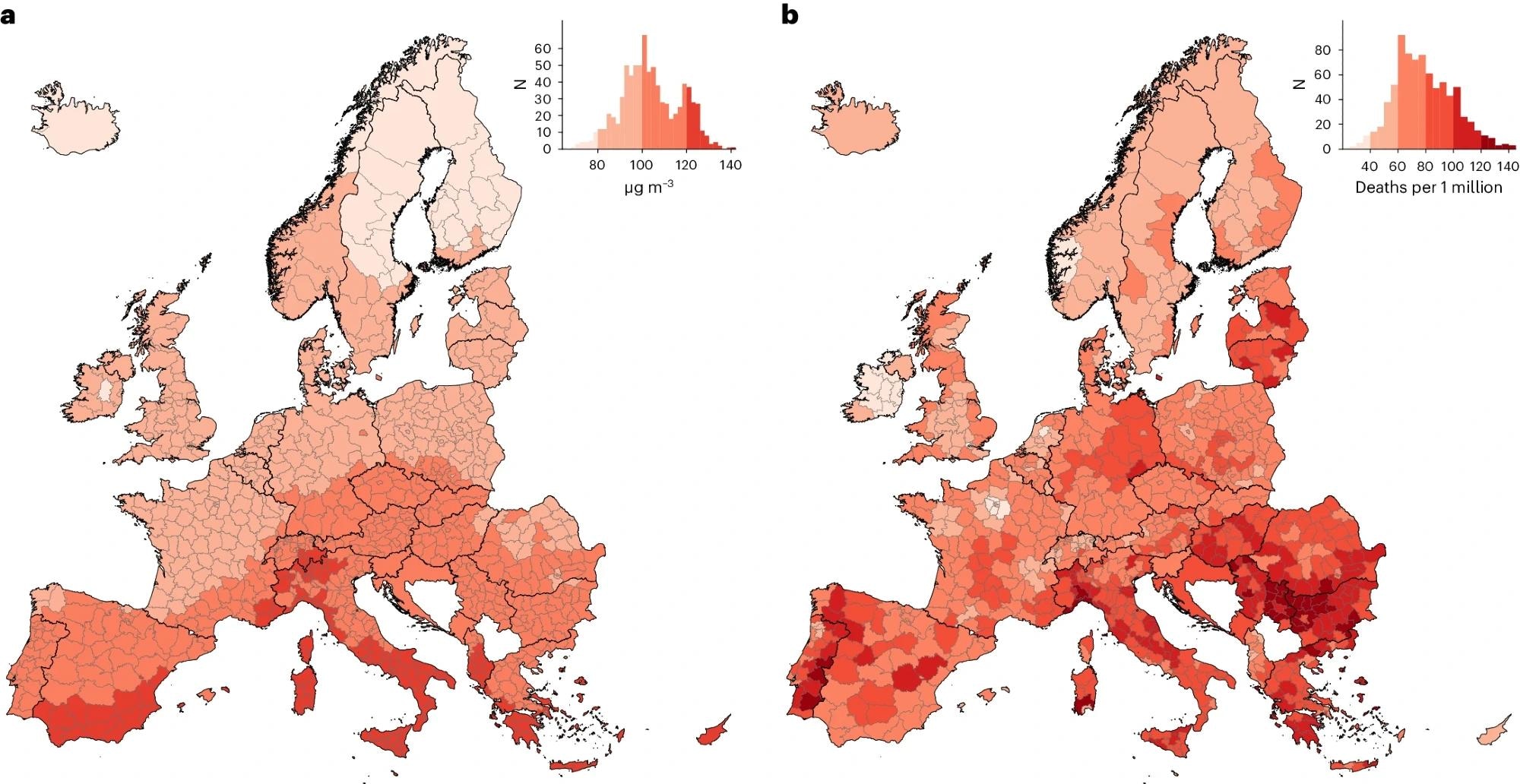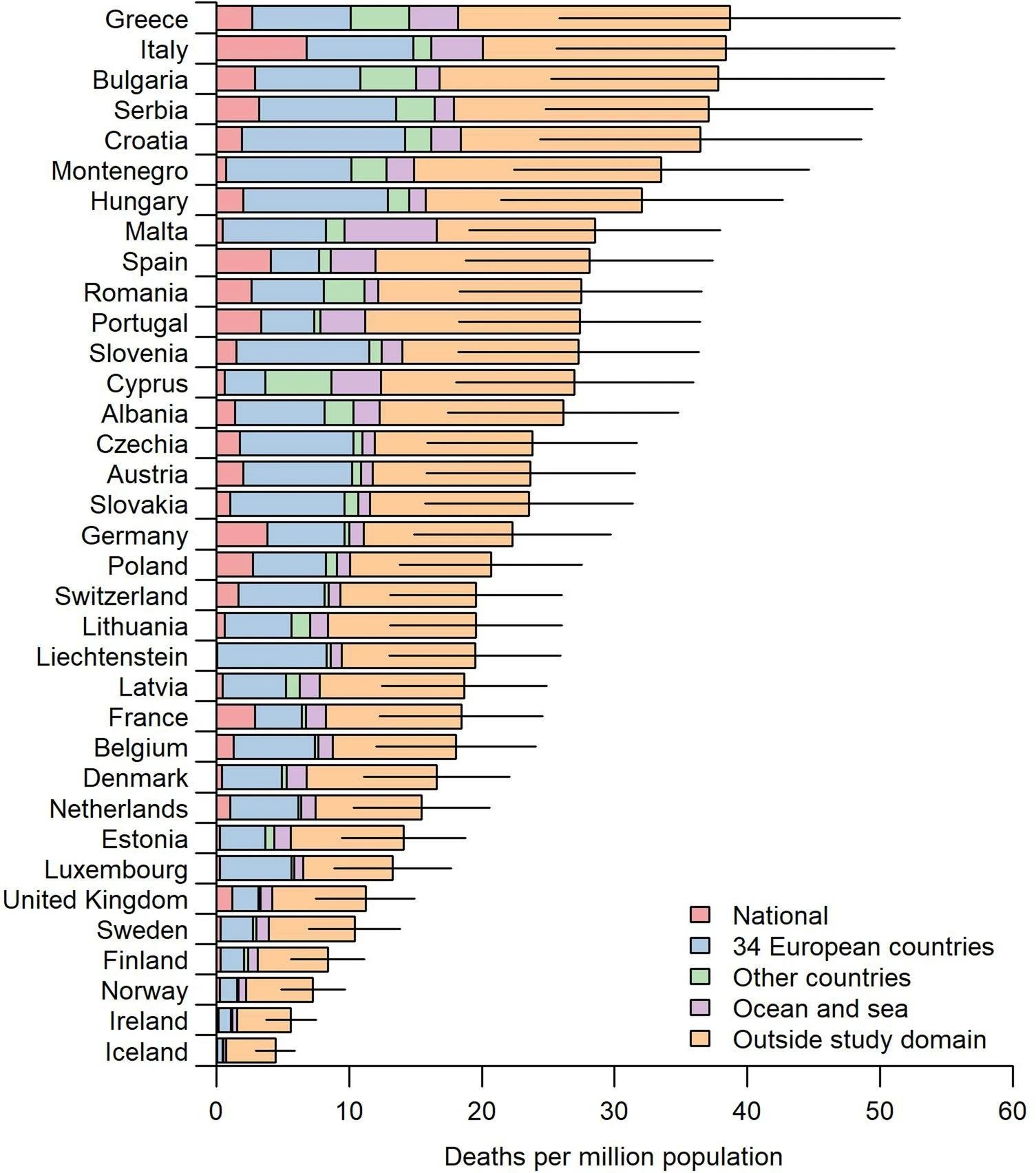Ground-level ozone is formed in the troposphere due to the interaction between sunlight and greenhouse gases (GHGs) generated from natural and man-made sources, particularly nitrogen oxides and volatile organic compounds.
Ground-level ozone is a very harmful air pollutant. It is associated with many respiratory complications, including asthma, chronic obstructive pulmonary disease, and lung infection. Furthermore, excessive ozone exposure is a leading cause of air pollution-related hospitalization and premature mortality worldwide.
According to the European Environmental Agency, over 95% of the European population is exposed to ozone levels that exceed air-quality guidelines set by the World Health Organization (WHO).
Tropospheric transport of ozone and its precursors from far-distant sources, otherwise referred to as imported ozone, is a major determinant of ground-level ozone levels. Thus, coordinated actions among countries are urgently needed to effectively reduce ground-level ozone levels and their associated health complications.
Important observations
In the current study, scientists assess the health effects of ground-level ozone exposure in Europe. The researchers also quantified mortality rates associated with both national and imported ozone exposures across 813 contiguous regions in 35 European countries, which represent 530 million people.
The average concentration of ground-level ozone across European countries was estimated to be 101.9 μg m−3. Ozone concentrations in southern European nations were higher than in the north, which can be attributed to the warmer climate of this region.

O3 levels and associated mortality during the warm season (May–September), 2015–2017. a, Average daily mean 8-h maximum O3 (µg m−3). b, Mortality (annual deaths per 1 million population) attributable to O3. a,b, Histograms depict both the color legend and the number of regions for each value.
During the warm seasons of 2015 to 2017, a mortality rate of 72 annual deaths for every one million inhabitants was reported. Highly populated and southeastern European nations had the highest mortality rates.
About 88.3% of all attributable deaths were caused by exposure to imported ozone, with an intercountry range of 83-100%. Hemispheric sources were the greatest contributors to imported ground-level ozone, which was responsible for 56.7% of all ozone-attributable deaths.
Each analyzed European country's exposure to imported ozone generated from other European countries was responsible for 20.9% of all ozone-attributable deaths. Imported ozone from ocean and sea sources also contributed 7.2% of all attributable deaths in smaller southern European countries.
 O3 associated mortality according to O3 emission sources in 35 European countries, 2015–2017. Only days with average mean 8-hour maximum O3 above 70 µg/m3 were considered in this analysis. The horizontal bars represent the 95% empirical CI of the overall O3 attributable mortality (ie, the sum of the five contribution sources).
O3 associated mortality according to O3 emission sources in 35 European countries, 2015–2017. Only days with average mean 8-hour maximum O3 above 70 µg/m3 were considered in this analysis. The horizontal bars represent the 95% empirical CI of the overall O3 attributable mortality (ie, the sum of the five contribution sources).
The most populated and industrialized countries had major contributions to imported ozone-attributable deaths. A significant impact of France-originated ozone was observed on the attributable mortality in neighboring countries, including Luxembourg, Switzerland, Belgium, Liechtenstein, Spain, and Germany. Similarly, ozone originating from Germany significantly impacted the attributable mortality in Luxembourg, the Czech Republic, the Netherlands, Denmark, Austria, Belgium, and Poland.
The health effects of transboundary-transported ozone were less pronounced in southwestern countries. The highest mortality rates due to national ozone production were reported in Spain, France, and Portugal.
A sensitivity analysis estimating the ozone-attributable mortality at a safe threshold of 70 µg m−3 showed a three-times reduction in the number of deaths to 23 annual deaths for each one million inhabitants during the warm seasons of 2015 to 2017.
Conclusions
The current study's large-scale geographical coverage allowed the researchers to determine the effect of ground-level ozone on all-cause mortality across the entire continent. To this end, Europe's largest attributable mortality burden was associated with hemispheric ozone transported from other nations. Comparatively, only a small fraction of attributable mortality is associated with national-level ozone production.
Ozone transported from other European countries also significantly impacts attributable mortality. A considerable contribution of maritime ozone emission to mortality was observed in some coastal regions and smaller Mediterranean countries.
The study highlights the need for transboundary assessment of pollution sources and associated health effects to manage air pollution effectively. However, most current mitigation efforts are focused on national and regional scales.
The observed impact of maritime emissions on attributable mortality emphasizes the need for implementing a nitrogen emission control area to reduce nitrogen oxide emissions, which has been successfully implemented in both the North and Baltic Seas.
Current projections suggest that global warming could increase ground-level ozone levels. In addition to directly triggering ozone production, global warming can also increase the emission of ozone precursors, which can further contribute to total tropospheric ozone concentrations. Thus, mitigating climate change is the need of the hour to improve air quality and reduce air pollution's health impact.
Taken together, the study findings stress the need to implement national or coordinated pan-European actions and global strategies to reduce the deadly health effects of ozone exposure.
Journal reference:
- Achebak, H., Garatachea, R., Pay, M. T., et al. (2024). Geographic sources of ozone air pollution and mortality burden in Europe. Nature Medicine. doi:10.1038/s41591-024-02976-x